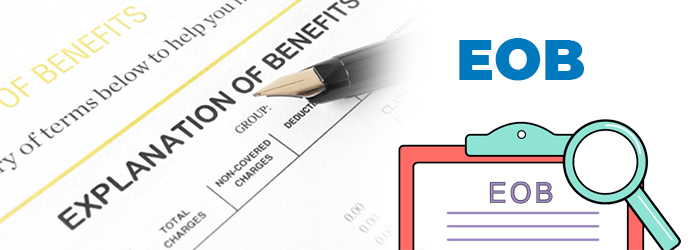
EOB (Explanation Of Benefits)
The prices that your medical insurance will reimburse for the services or goods you've received are listed on an EOB, which is a report from the insurance company. When your health provider submits a claim for the care you received, the EOB is produced.
With the help of your explanation of benefits, it helps you to keep an adequate record of all the health services you received and their associated cost and expenses.
Is The Explanation Of Benefits (EOB) The Same As a Bill?
No, your EOB is not the same as a bill. Your EOB simply contains the statement of the health care services you received, the cost, and how you are to share the cost with your plan. The EOB cannot be used to clear previous debt or outstanding bills.How Does An Explanation Of Benefits (EOB) Work?
When you receive medical care, a healthcare worker will submit a claim to your health insurance agency. You will then get an EOB. You might get a different bill for the sum you might owe later. Your bill will specify whether to send the money to your medical insurance firm or a healthcare practitioner.Explanation of benefits is a method for showcasing the worth of your medical insurance coverage to consumers. You may check how much the treatments and services you received are priced and how much money you saved thanks to your subscription.
An explanation of benefits can assist you in estimating how much income may still be in plan-related accounts. EOBs for certain plans also reflect your potential closeness to hitting your yearly deductible.
Will You Always Get An Explanation Of The Benefits Of Every Medical Care Service You Receive?
Regardless of your status with Medicare, employer-sponsored insurance, or private health insurance, you will get an EOB. Unless you made prior arrangements with the provider to make payments outside of your medical insurance, you really should get an EOB for each health service you received, regardless of if you miss a payment for it or not.Those with (HMO), and Health Maintenance Organization plans can be an exemption. Several of these programs have monthly charges for care rather than charging each service. You might not get an EOB in such circumstances.
How To Read Your Explanation Of Benefits (EOB)
To read perfectly the different sections of your EOBs, follow the following steps and explanations:- Provider: The title of the medical professional who rendered the service. The kind of treatment you received, or procedure.
- Overall Cost: The cost of the medical service as a whole. It could not be as much as the service provider billing.
- Not covered: The portion of the service that is not insured.
- Deductible: If the medical service has a deductible, you would be responsible for paying it before the insurance company contributes pay their share.
- Copay or coinsurance: This is the cost you contribute.
- Additional Patient Responsibility: Additional fees you might need to cover the treatment.
- Plan's Share: The sum forked over to obtain the service.

.png)